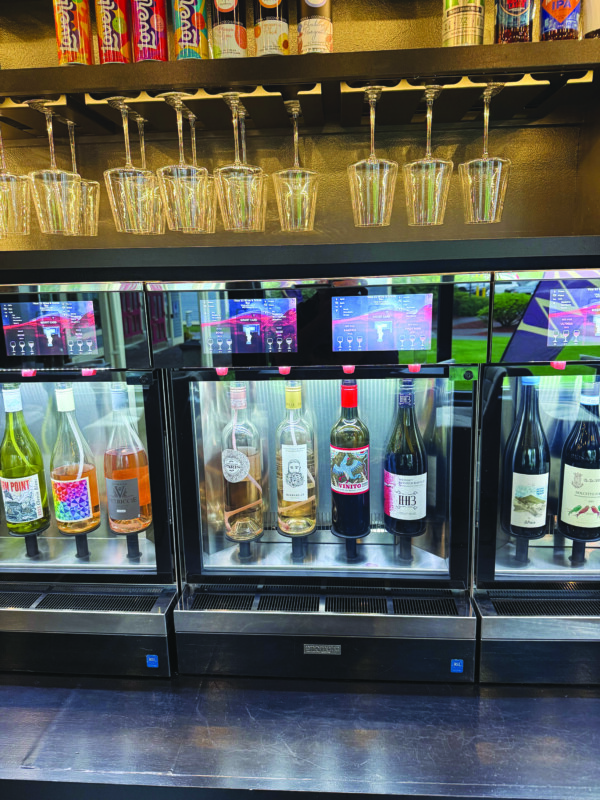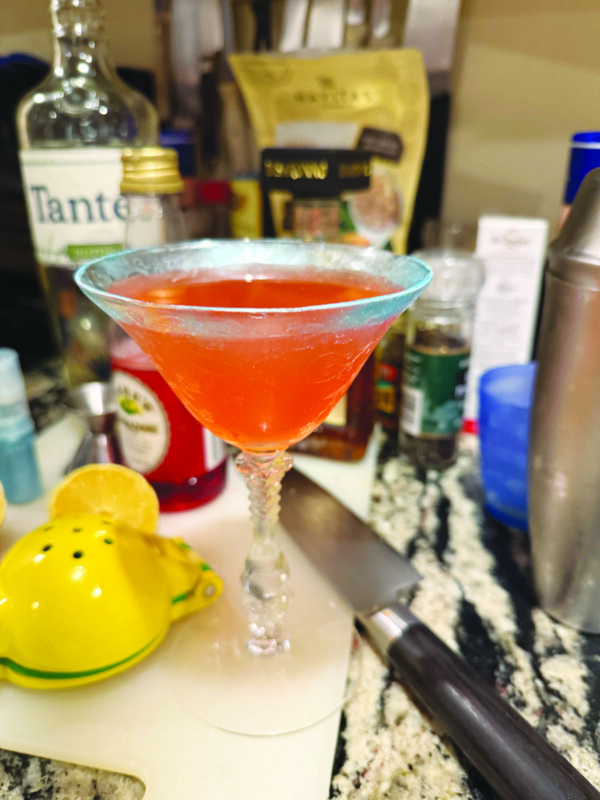Self-service might be the future of NH wine bars
By John Fladd
jfladd@hippopress.com
A bill is working its way through the state Senate and looks likely to head to the governor’s desk. SB79, introduced in March by Sen. Tim Lang, would enable “the use of self-pour automated systems by liquor commission licensees.” It would allow some bars and restaurants to serve beer and wine to customers using automated self-serve technology.
Vine 32 Wine and Graze Bar in Bedford already uses such a system. According to co-owner Tom Bellemore, Vine32’s system, which has been in place for three years, is currently the only one in operation in New Hampshire. He said that the State has been watching his wine-bar carefully.
“Three years ago, they allowed us to open with our concept and said that depending on how Vine 32 does … if it was successful or not, that would determine if they wanted to pass legislation or codify it into law,” Bellemore said.
While some new customers can be intimidated by using an automated system, Bellemore said, they quickly get comfortable using it.
“From a customer’s point of view,” he said, “you would walk into our establishment, you have the hostess stand to greet you. If you’ve been there before, great. If you haven’t, even better. We’ll kind of give you a rundown on how the machines work, a tutorial, and we’ll give you an RFID card, which it’s like a debit card. It’s got a little chip on it, and that’s what a customer would use to put in the machine. There is a wall of machines, and each machine has a key that you would put your debit card, wine card in. And from there, there’s 32 different rotating wines to select from, which you could choose as a customer. There are three increments to choose from on each wine: a [1-ounce] taste, half a glass [4 ounces], or a full [6-ounce] glass. A lot of people tend to congregate where the wine machines are, to explore and find the wines they like or don’t like. And then they would have a seat. We offer a small menu, kind of bite-sized appetizers, served on a charcuterie board.”
Vine32 has a sommelier, WSET Level 4-certified Genevieve Wolfe, to answer customers’ questions.
Being able to sample new wines and customize their pour-size is attractive to customers, but Bellemore said there are significant advantages for a wine-bar owner as well.
First, a wine-bar can serve a limited number of wines at a time and doesn’t have to keep a huge cellar with dozens of varieties. “Seasonally, we swap out all 32 wines we offer,” Bellemore said. “Every six weeks there are a couple of new ones, but certainly every season. Obviously, there’s more whites in the summer and more reds in the winter.”
Also, a self-serve system can unobtrusively provide a wealth of data. Bellemore can track exactly which wines are most popular and under what conditions, which helps him decide what to order. It also allows a customer to keep track of what wines they prefer. “We can look at every time every time you come in,” Bellamore said, “so a customer can tell us, ‘I really like that wine I was drinking that one time, but I don’t remember what it was.’ We can search your name, print out a receipt of all your activity, and give you a list of every wine you’ve drunk.”
And finally, the system sets a limit on how much wine a customer can buy using their card, which reduces conflict when a drinker gets cut off.
“If you pass a certain amount of volume for drinking,” Bellamore said, “it shuts you off. I’ve grown up in bars. I’ve seen a lot of ‘sober+’ people get upset. Here, we just say, ‘Hey, it’s the machines, right?’ Which kind of takes the emotion out of it. And every single time they’re just like, ‘Yeah, what can you do? It’s the machine, right?’”
SB79
To read original and amended versions of SB79, visit legiscan.com/NH/drafts/SB79/2025.
Vine 32 Wine and Graze Bar
Where: Bedford Square, 25 S. River Road, Bedford, 935-8464, vinethirtytwo.com
Hours: open Tuesdays through Thursdays 5 to 9 p.m., Fridays 4 to 10 p.m., Saturdays 2 to 10 p.m., and Sundays 2 to 6 p.m.
Featured photo: Photo by John Fladd.





